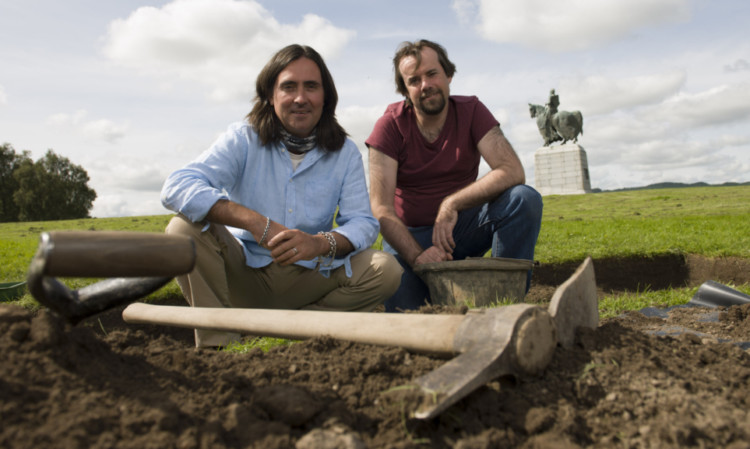A medieval cross dropped by a fleeing English cavalryman has helped pinpoint the exact location of the Battle of Bannockburn, according to experts.
The cross is one of a number of items recovered during a major archaeological sweep of the area, which has narrowed the site of the bloody battlefield to the Carse.
Dr Tony Pollard, director of the Centre of Battlefield Archaeology at Glasgow University, said: “Medieval battlefields are notoriously difficult to locate archaeologically.
“It is not just a matter of the passage of time and conditions which generally don’t help with preservation, but also the scavenging of the battlefield for dropped equipment and even bits of broken weaponry once the fighting was over all of this adds up to very little being left behind for the archaeologist.
“But we now do have the first tangible evidence for the Battle of Bannockburn.”
https://youtube.com/watch?v=S7rjkXomG_k%3Frel%3D0
He added: “These finds are the first validated artefacts of the period found in the general area of the battle and lend weight, along with other evidence found during the project, to the theory that the battle on June 24 1314 was on the Carse.
“Over the years and through working on this project, I have come to firmly believe that the battle on the second crucial day was on the Carse, where the English camped overnight and had then been surprised by Robert the Bruce’s troops unexpectedly coming down from the high ground to get the advantage and make the greater numbers and resources of the English army work against them in a more confined setting.”
The investigation has been led by BBC Scotland for a two-part series, the Quest for Bannockburn, presented by Tony Pollard and Neil Oliver.
More than 3,000 metal objects were found in the general Bannockburn area, including an 18th Century coin, a modern toy cannon and pieces of medieval pottery.
However, after due dating and verification processes, only a handful have been deemed to be from the correct period and relevant to the battle.
The cross pendant, which would have hung from a medieval horse harness, and the other cavalry items were found close to the southern bank of the Bannock Burn, close to the area where English troops camped on the Carse on the other side of the burn.
Although the English forces, under Edward II, had picked a strategically sound campsite, the area proved their undoing as it was too tight to effectively counter the Scottish attack.
They were soundly beaten and their retreat proved chaotic.
Tony Pollard said: “As these guys were flying across the burn there is no doubt that this stuff is going to be falling off it would be absolute panic.”
Neil Oliver said: “Never before has the Battle of Bannockburn been so thoroughly investigated.”
The Quest for Bannockburn begins on BBC2 tonight at 9pm.
